Knowing what you’re dealing with is the first step to overcoming this parasitical nightmare for most pet owners.
Fleas and ticks are both parasites that feed on the blood of its hosts. Infestations of fleas and ticks are common and can easily happen because they are tolerant of harsh conditions and multiply prolifically. Adding to the nightmare, fleas have a lifespan of 3 months while ticks can live up to 3 years – both of which are much longer compared to the average house pest like the common housefly and mosquitoes.
Flea or tick bites cause carries a myriad of pathogens and diseases. A less severe problem would manifest in the form of itchiness, but more chronic health problems can affect your beloved pet if the infestations are left untreated.
Fleas vs. Ticks
Fleas are small, wingless insects that thrive in warmer climates. They can leap up to 100 times their body size and prefer living off a single host. On your pet, the flea can live longer than 100 days.
Ticks are larger than fleas and they are classified as arachnids. They do not leap or jump as fleas do, but they can crawl up almost anything and can survive near-freezing temperatures and many kinds of poison. Ticks live up to 3 years feeding off multiple hosts like rats, stray dogs and cats, wild boars or primates, and even reptiles like snakes and monitor lizards throughout their lifetime.
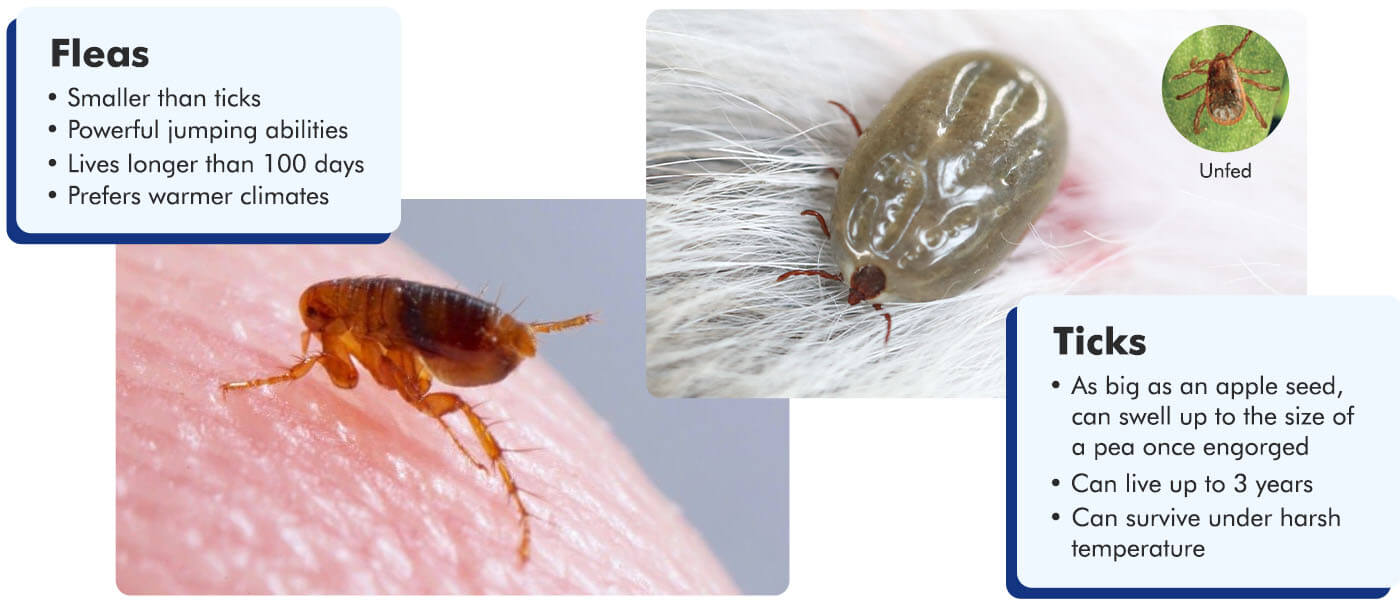
These parasitic critters exist in all the environments that your pet loves to explore – from grassy bushes to concrete walkways. This explains why your cat or dog easily catches fleas or ticks simply from a short stroll around the neighborhood – not to mention a hike up the hill. Many times, infestations can even happen when you keep your pet indoors; a stray that interacted with your pet at your doorstep could be carrying the parasite, or perhaps a kind-hearted but clueless neighbor next door decided to adopt a flea-infested stray.
Understanding the flea and tick life cycle
While both fleas and ticks have distinctively different appearances, they share similar life cycles from egg to adult. The larvae’s journey to maturity depends on environmental factors such as temperature, humidity, and the availability of a nourishing host.
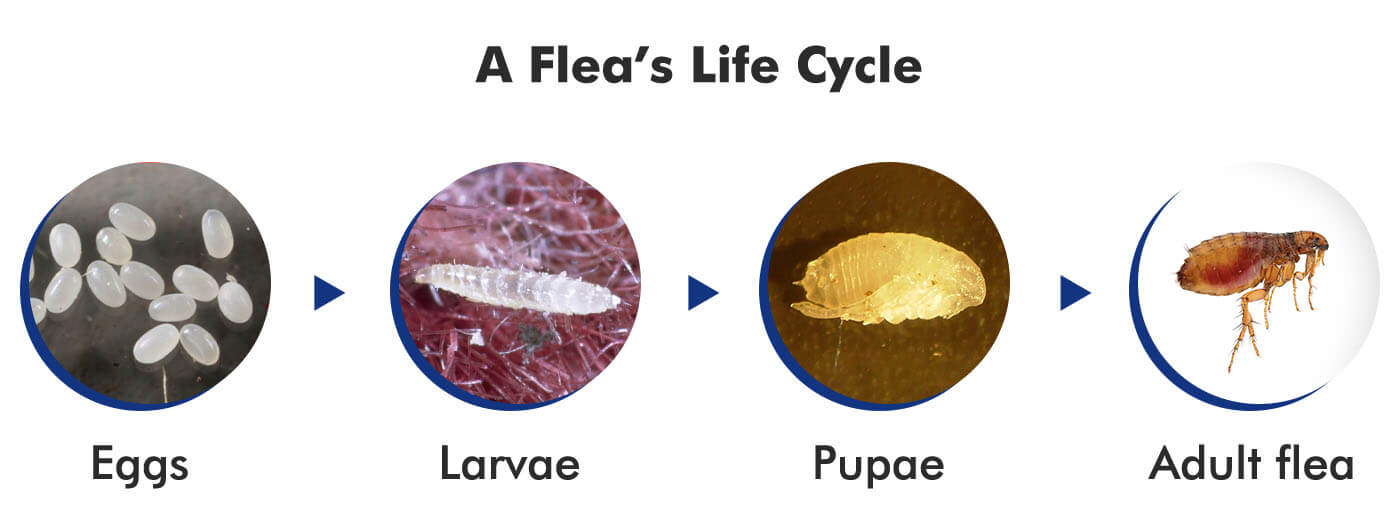
Eggs
Fleas deposit their eggs in the haircoat of their host. The eggs are loosely attached and readily fall from the haircoat onto bedding, carpet, soil, or even the ground.
Larvae
The larvae hatch between 1 to 6 days, living among the carpet fiber or, in floor cracks. At this stage, they are invisible and live off the adult fleas’ feces or other flea eggs.
Pupae
Pupation begins in 5-20 days. The larvae form a cocoon. In the meantime, the host (or anyone, actually) will pass and unknowingly pick them up in their fur or beneath the shoes.
Adult Fleas
The matured fleas hatch from the cocoon, and can immediately jump onto the nearest cat or dog to begin the life cycle all over again.

Eggs
A female tick will lay up to thousands of eggs at a time and dies afterwards.
Larvae
The egg hatches into six-legged larvae and starts attaching itself to a host. It feeds for about a week.
Nymph
The larva drops off from the host and molts, emerging as an eight-legged nymph.
Adult Tick
The fully developed nymph drops off from the new host once again to molt and emerges as an adult eight-legged tick.
The danger of fleas and ticks infestation
A fleas and ticks infestation goes beyond skin-deep itchiness and irritation. These parasites are known to pose life-threatening dangers to your pet’s health if left untreated. Skin damage and open wounds resulting from the infestation can easily lead to more severe skin problems or allergic reactions. Tick-borne diseases can be fatal to the infected pet at times, and diseases caused by fleas are nothing to sneeze at.
Common diseases caused by fleas
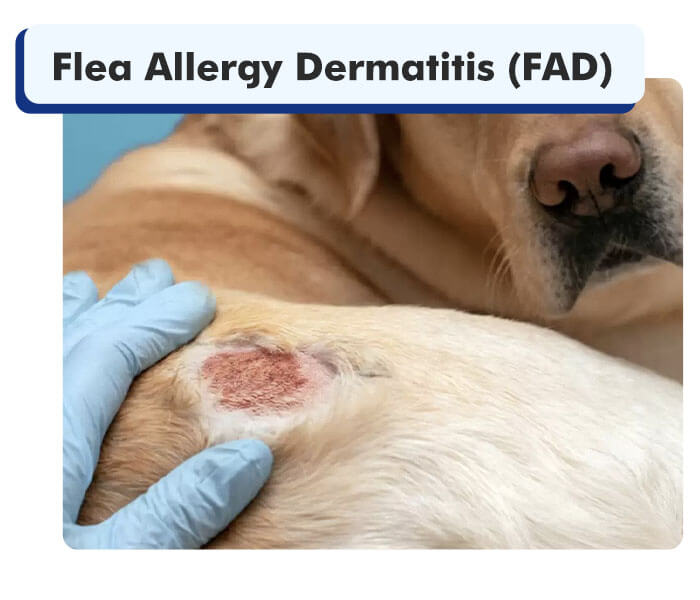
Some dogs are severely allergic to flea saliva and can experience extreme discomfort even from a single flea bite. Some dogs will chew or rip out their hair or fur until the area is bare. If unchecked, flea allergy dermatitis can cause painful sores and bacterial infections.
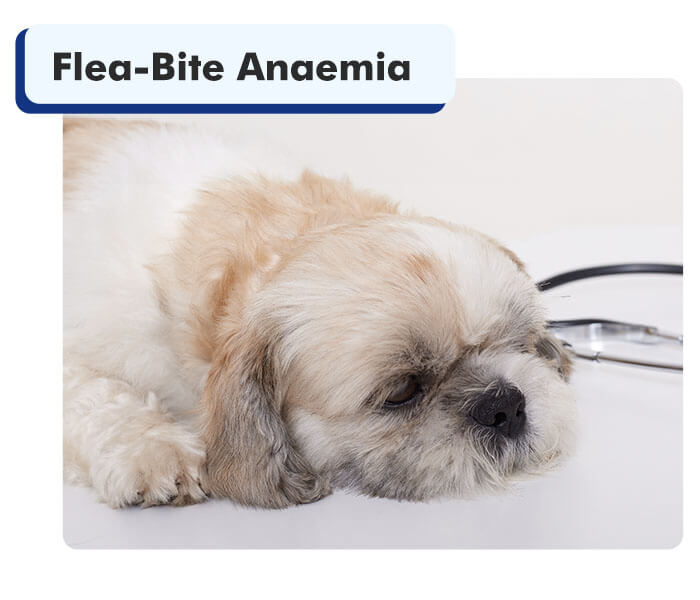
Fleas can consume up to 15 times their own body weight in blood a day, which is basically the equivalent of a 45kg human eating 680kg of food in 24 hours. Cats or dogs that are old, pregnant, sick, or smaller in size (have less blood volume) are susceptible to being anemic from flea infestation.
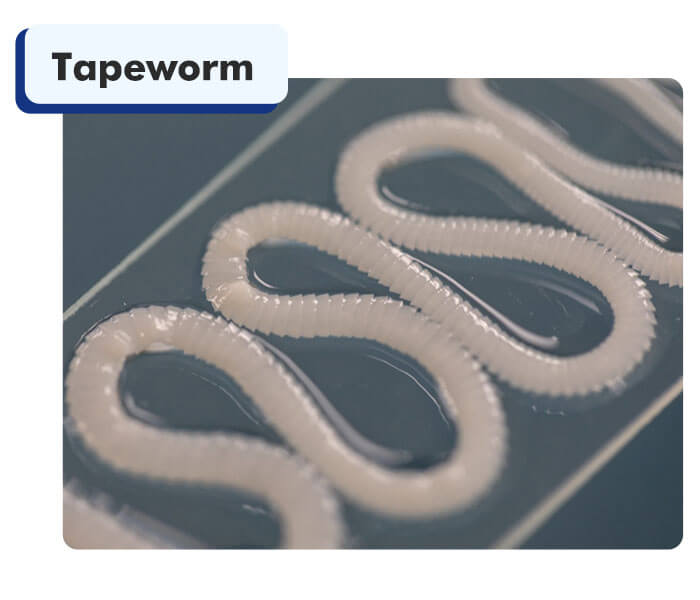
As your pet groom themselves, fleas that contain tapeworm eggs may be ingested unknowingly. The tapeworm hatches and hooks itself onto the intestinal linings of its host, absorbing nutrients as food passes through the digestive tract. This parasite may cause nutritional deficiency and weight loss.
Common diseases caused by ticks
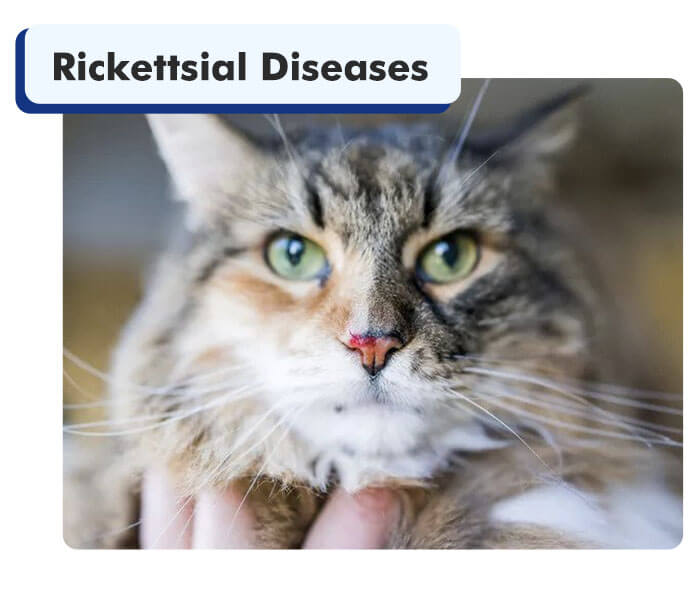
Symptoms of rickettsial diseases typically begin one to three weeks after your pet has been infected and may include bruising, fever, poor appetite, or nosebleeds.
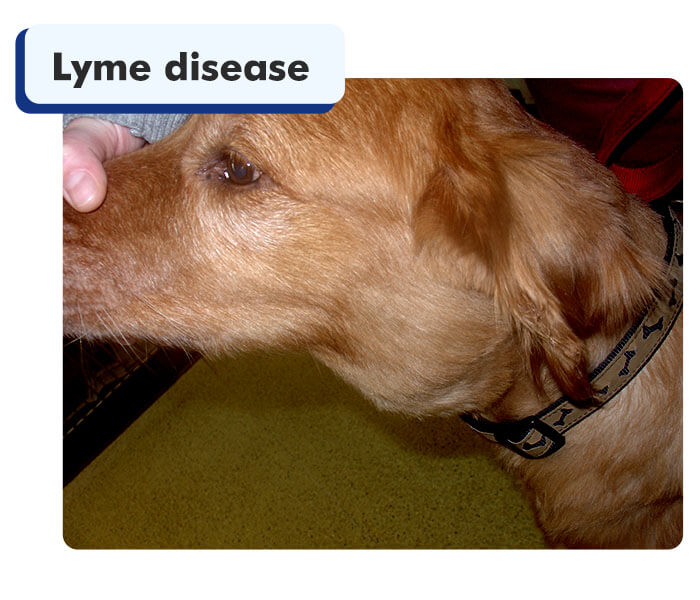
The symptoms of Lyme disease infection in your pup might include fever or joint pain/swelling along with an enlargement (or swelling) around nodes in their neck area. This disease can be passed to humans too.
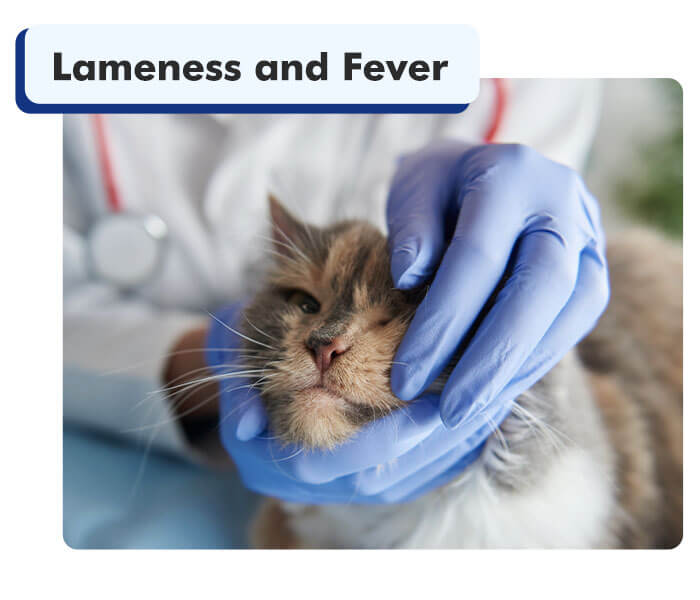
The symptoms of Lyme disease infection in your pup might include fever or joint pain/swelling along with an enlargement (or swelling) around nodes in their neck area. This disease can be passed to humans too.
How to know if your pet has a flea and tick infestation?
Bites from both fleas and ticks are painful and itchy. Your pet will not be able to hide its discomfort, attempting to relieve the itch by constantly scratching or licking at its irritated skin. It is difficult to identify fleas and ticks based solely on bite wounds because of the pet’s fur. That is why it is important to know the other signs of infestations on your pet. Here are some symptoms to look out for:
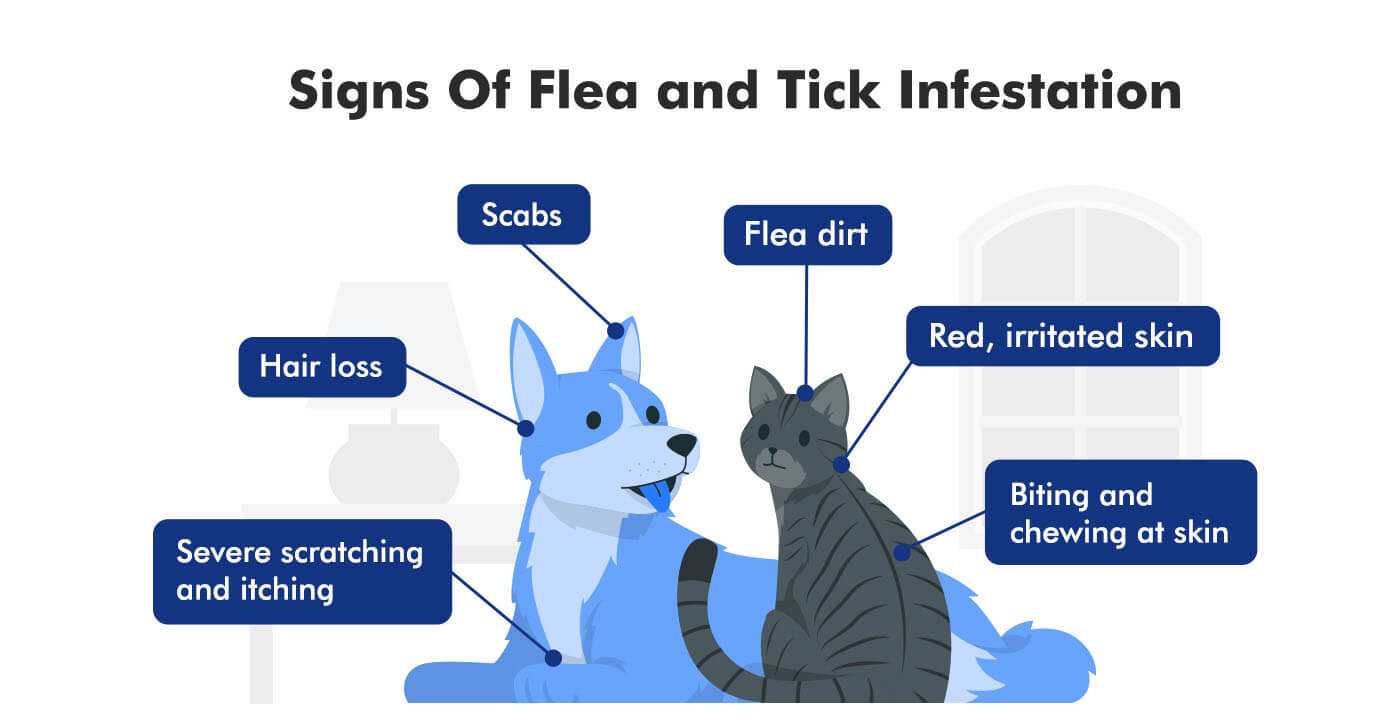
The best way to search for fleas is to comb your pet with a flea comb. These fine-toothed combs are designed to pick up fleas and flea dirt, making it easy for you to spot evidence of flea activity on your pet.
You may spot flea dirt in your pet’s coat or bedding in the form of tiny black specks. To verify if these specks are byproducts of fleas, brush the specks with a damp white paper to see if they turn from black to reddish brown – the color of aged blood. While you are at it, carefully feel around your pet’s skin for small lumps, bumps, or crusty spots, all of which could indicate the presence of an engorged tick that just had its fill from your pet. They are most likely to be found in warm, moist areas, particularly between your pets’ toes, ears, armpits, groin area, and facial folds.
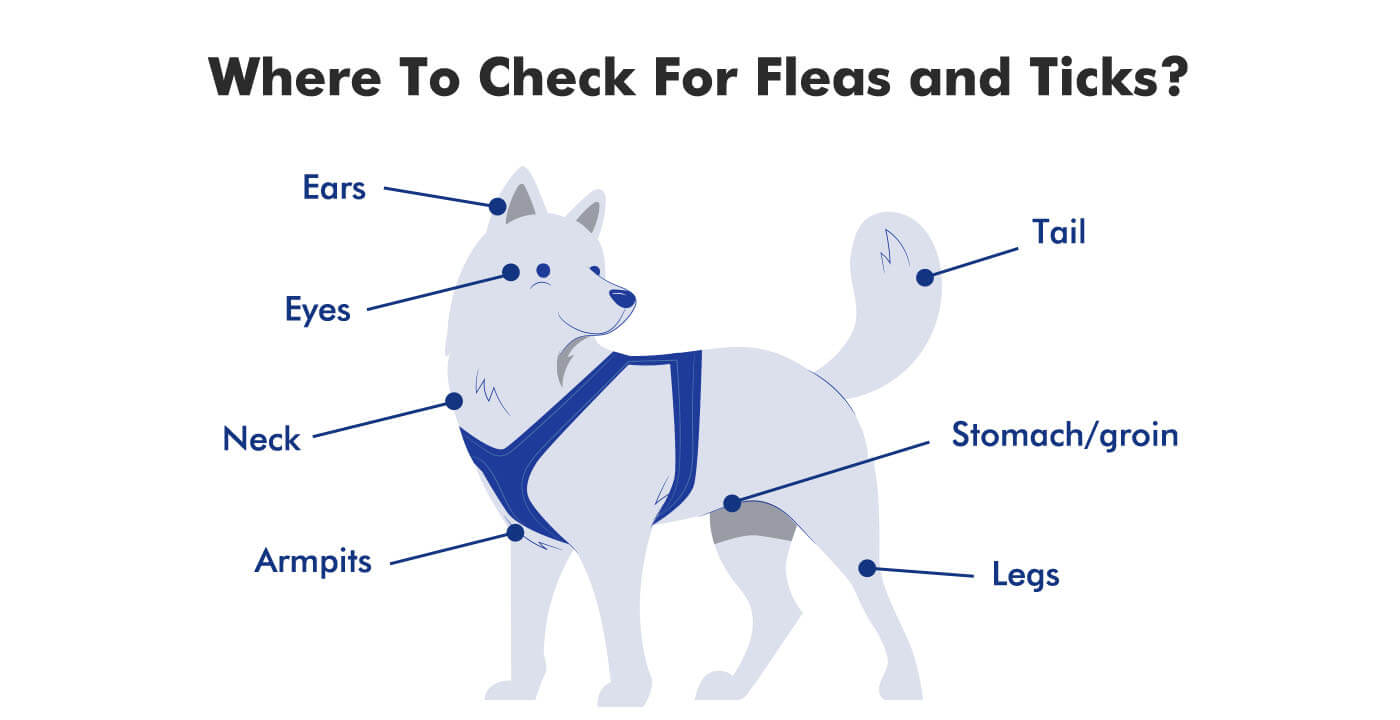
P.S. Fleas jump and may try to relocate to other parts of your pet’s body. Have a bowl of hot water nearby, and dip the comb inside to kill the fleas between each brushing.
Disrupt the life cycle
The key to combating flea and tick infestations on your pet is prevention through regular baths using a medicated shampoo, with flea and tick-repelling properties. Neem oil has been widely used as a natural pest repellent to kill and repel fleas and ticks on furry pets.
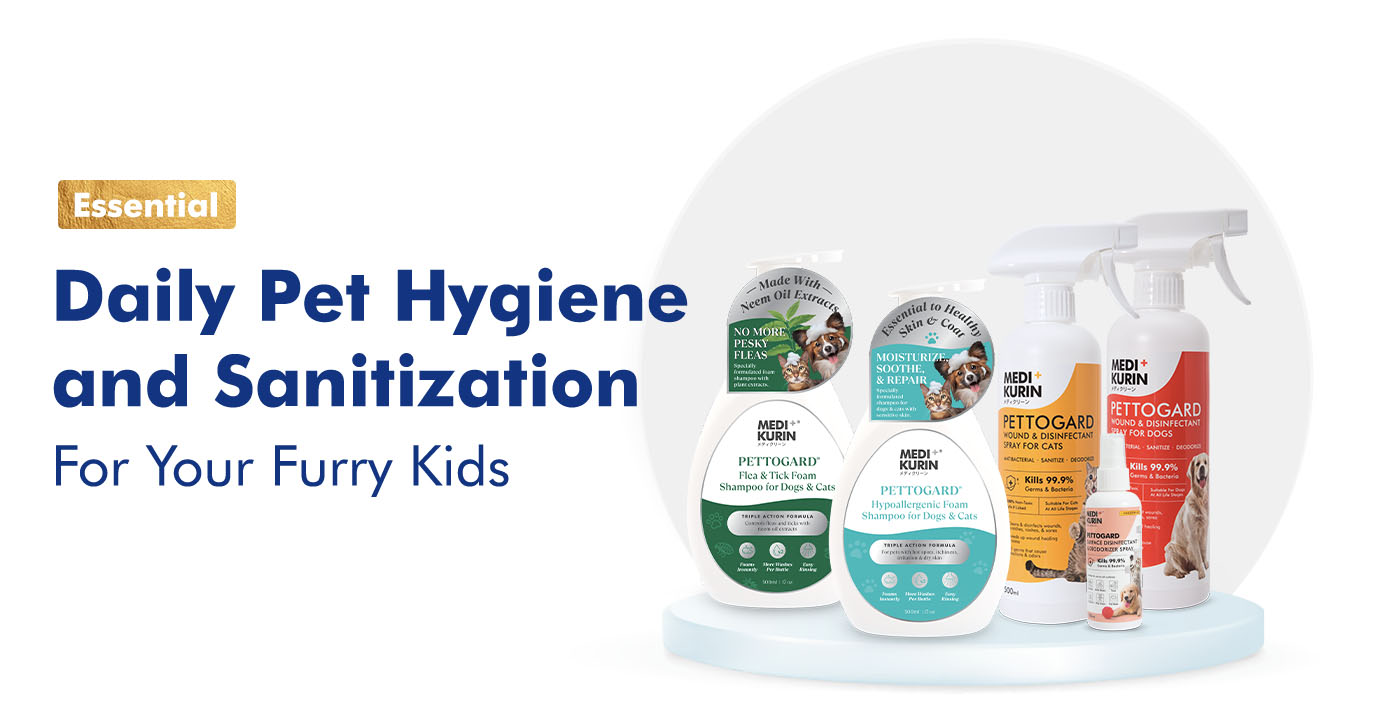
MEDIKURIN’s PettoGard® Flea & Tick Foam Shampoo for Dogs & Cats is specially formulated with neem oil extracts – with the specific intent of killing flea and tick eggs on your pets. This ends the life cycle of these parasites and protects your beloved pets from further infections or infestations. Continuous use of the shampoo gives your pets the added benefit of the shampoo’s triple-action formula that moisturizes, soothes irritation or itchiness, and repairs your pet’s damaged skin caused by ticks and fleas.
On the other hand, if your pet is already facing flea and tick issues, MEDIKURIN’s PettoGard® Antimicrobial Skin Care & Wound Spray for Dogs and Cats is a topical antibacterial, antifungal, and antiviral skin cleansing solution that is formulated for the specific purpose of treating flea and tick bites and soothing irritated skin. This reduces further scratching, helping your pet recover from hair loss or painful skin scabs caused by nasty infestations.
The key ingredient of the Wound & Disinfectant Spray is Hypochlorous acid (HOCl), an active ingredient that combats pathogens. HOCl is naturally found in white blood cells, and this active ingredient fights infection and heals wounds by building and repairing muscle, skin, and body tissues. HOCl is highly hypo-allergenic, which means it is unlikely to cause any subsidiary allergic responses. As it is non-toxic and pH neutral, HOCl is a safe way of eliminating fleas and ticks on your pet without any usage of harsh pesticides commonly sold in pet stores and clinics.
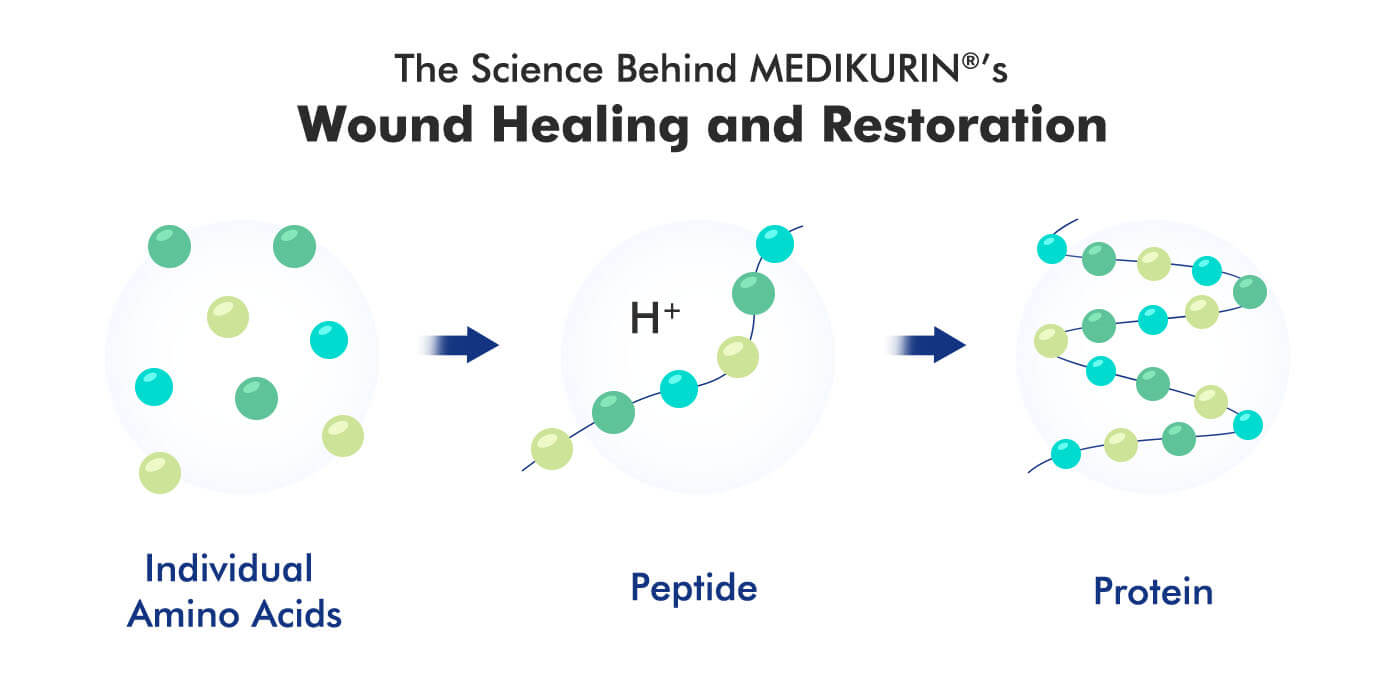
During the formation of Peptides, the hydrogen protein (H+) helps individual amino acids link together to become the final protein structure.
Protein helps would to heal by building and repairing muscle, skin, and body tissues. It is also crucial in fighting infection, balancing body fluids, and carrying oxygen throughout our pet’s body. Spraying MEDIKURIN® Antimicrobial Skin Care & Wound Spray directly onto wounds enhances the healing process
Keep your surroundings clean to reduce fleas and ticks
A hygienic environment critically lowers the risks of an infestation. Remember to frequently clean pet toys, food bowls, bedding, carpets, or house furniture. Rugs, carpets, and fabrics should be vacuumed and cleaned regularly as these are where fleas and ticks often reside. If you have a garden or yard, it is best to keep the grass and bushes trimmed and maintained regularly to prevent them from becoming a breeding ground for parasites.
Conclusion
The best way to fight flea and tick infestation is to prevent it from happening in the first place. All it takes is one parasite at home to turn the tables.
Left unattended, fleas and ticks may cause problems for humans too. Fleas bite humans too and hide easily in the nooks and corners of your home.
However, if you have exhausted all resources to help your pet recover from flea and tick bites, it is advised to turn to your veterinarian. For your peace of mind, simply remember that MEDIKURIN’s PettoGard® products are here to prevent infestations and provide you and your pets relief from them.
